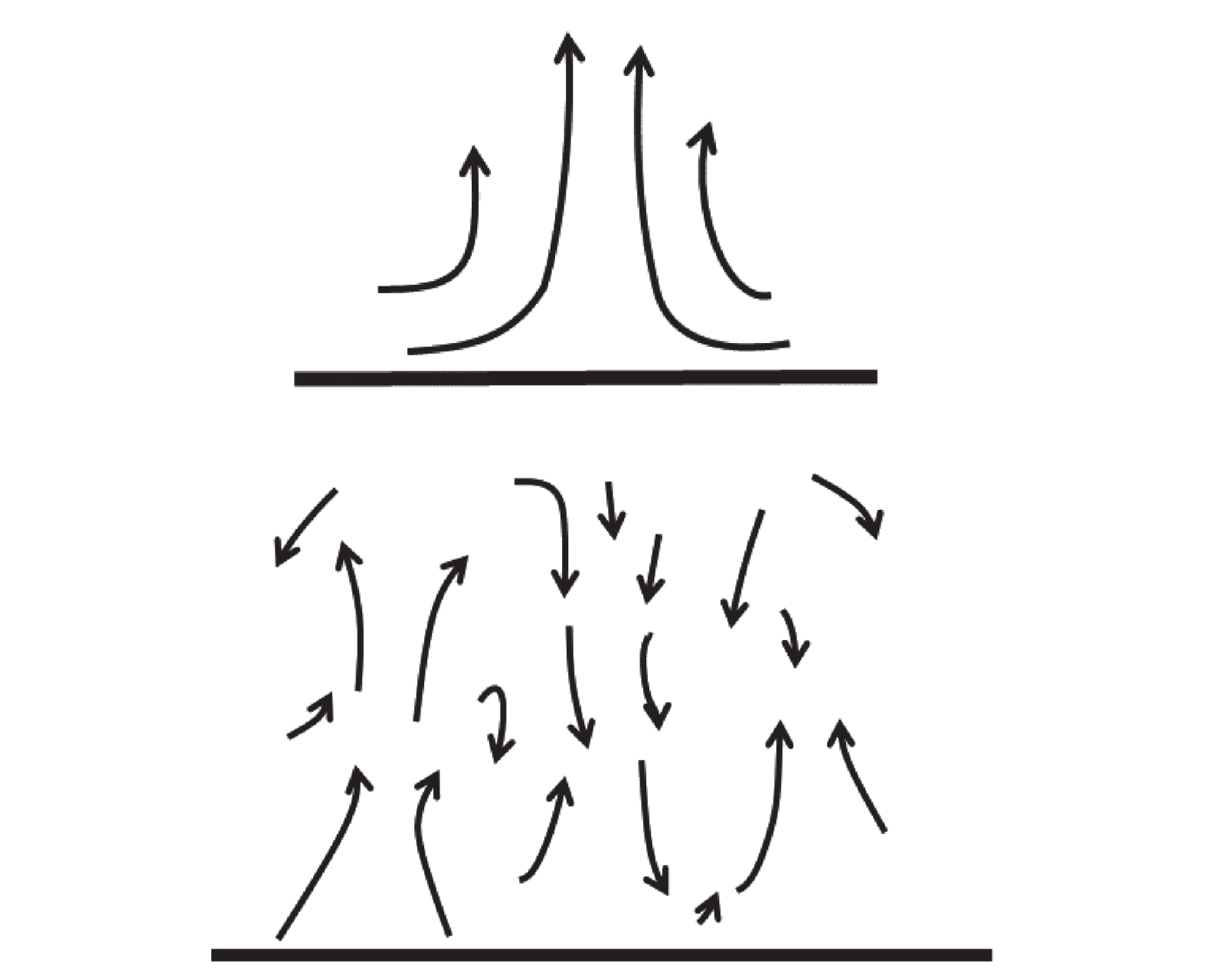Yan Wang, Yongxing Yang, Jinpeng Li, Yong Bi, Qingsheng Zhu. Experiment study on large solar telescope mirror seeing[J]. Infrared and Laser Engineering, 2024, 53(1): 20230412
Search by keywords or author
- Infrared and Laser Engineering
- Vol. 53, Issue 1, 20230412 (2024)

Fig. 1. The laminar state and turbulent state diagram

Fig. 2. Relationship between FWHM and Strehl Intensity
Fig. 3. Optical schematic of the mirror seeing experiment
Fig. 4. Photo of the mirror seeing experiment
Fig. 5. System overall layout (The hollow circles are SMD temperature sensors and air temperature sensors; the hollow cylinder is the ultrasonic wind direction and speed sensor; the red rectangle is the silicone rubber heating plate; the trapezoid is the electric fan)
Fig. 6. Temperature sensors curve with time for free convection
Fig. 7. Test result diagram of ɸ 1.55 m large hyperboloid reflector primary mirror
Fig. 8. Strehl Intensity as a function of mirror-air temperature difference for the 1550 mm mirror (The filled portion of the figure shows the error statistics for multiple sets of experimental data)
Fig. 9. FWHM as a function of mirror-air temperature difference for the 1550 mm mirror (The filled portion of the figure shows the error statistics for multiple sets of experimental data)
Fig. 10. Seeing as a function of mirror-air temperature difference for free convection
Fig. 11. FWHM/
|
Table 1. Equipment parameter list
|
Table 2. Summary of test results for free convection (Mirror velocity=0 m/s)
|
Table 3. Summary of test results for forced convection at low wind speed (Mirror velocity=0.2 m/s) 1) the formula is applicable to
|
Table 4. Summary of test results for forced convection at high wind speed (Mirror velocity=1.0 m/s) 1) the formula is applicable to

Set citation alerts for the article
Please enter your email address



